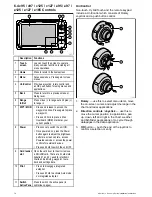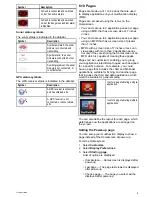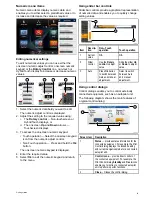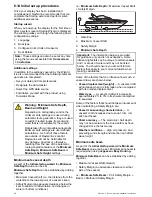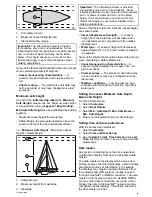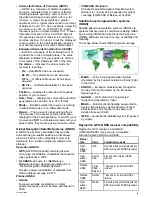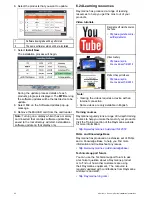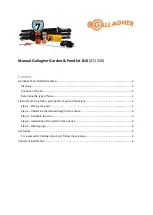
D1322-1
2
1
3
1.
Port safety margin
2.
Maximum Vessel Width (Beam)
3.
Starboard safety margin
Important:
The information below is provided
for guidance only and is not exhaustive. Some
influencing factors can be unique to certain vessels
and / or areas of water and may not be listed
below. You should ensure you account for ALL
factors that apply to your current situation when
making calculations.
Some of the factors that should be taken into account
when calculating a Safety Margin are:
•
Vessel maneuvering characteristics
— A
vessel’s required clearance will increase due to
roll.
•
Chart accuracy
— The electronic chart data may
not be accurate or may have changed since last
surveyed.
Minimum safe height
As part of the
Initial startup wizard
the
Minimum
Safe Height
value can be set. Minimum safe height
is required when using
Jeppesen
®
Easy Routing.
.
Minimum Safe Height
can be established by adding
together:
• Maximum vessel height from waterline
• Safety Margin (an adequate clearance above the
vessel to account for tide and weather effects.)
i.e.:
Minimum Safe Height
= Maximum Vessel
Safety Margin.
1
2
3
D13323-1
1.
Safety Margin
2.
Maximum height from waterline
3.
Waterline
Important:
The information below is provided
for guidance only and is not exhaustive. Some
influencing factors can be unique to certain vessels
and / or areas of water and may not be listed
below. You should ensure you account for ALL
factors that apply to your current situation when
making calculations.
Some of the factors that can influence vessel height
are shown below:
•
Vessel displacement (weight)
— A vessel’s
height (from the waterline) will decrease when
it is fully laden when compared with its unladen
displacement.
•
Water type
— A vessel’s height will decrease by
approximately 2% to 3% in fresh water compared
to seawater.
Some of the factors that should be taken into account
when calculating a Safety Margin are:
•
Vessel maneuvering characteristics
— A
vessel’s height changes due to squat, trim, roll,
pitch and heave.
•
Chart accuracy
— The electronic chart data may
not be accurate or may have changed since the
last survey.
•
Weather conditions
— Low air pressure, and
prevailing wind strength and direction can affect
water level.
Setting the vessel Minimum Safe Depth,
Beam and Height
From the Homescreen:
1. Select
Customize
.
2. Select
Boat Details
.
3. Select
Min. Safe Depth
,
Min. Safe Beam
or
Min. Safe Height
.
4. Enter your calculated minimum safe settings.
Setting time and date preferences
With the homescreen displayed:
1. Select
Customize
.
2. Select
Time and Date Set-up
.
3. Use the
Date Format
,
Time Format
, and
Local
Time: UTC
menu items to set your time and date
preferences.
Data master
Any system containing more than one networked
multifunction display must have a designated data
master.
The data master is the display which serves as a
primary source of data for all displays, it also handles
all external sources of information. For example
the displays may require heading information from
the autopilot and GPS systems, usually received
through a SeaTalk
ng
or NMEA connection. The data
master is the display to which the SeaTalk, NMEA
and any other data connections are made, it then
bridges the data to the SeaTalk
hs
network and any
compatible repeat displays. Information shared by
the data master includes:
Getting started
83
Содержание A series
Страница 2: ......
Страница 4: ......
Страница 34: ...34 a Series c Series e Series installation instructions...
Страница 102: ...102 a Series c Series e Series installation instructions...
Страница 124: ...124 a Series c Series e Series installation instructions...
Страница 138: ...138 a Series c Series e Series installation instructions...
Страница 156: ...156 a Series c Series e Series installation instructions...
Страница 157: ......
Страница 158: ...www raymarine com...


